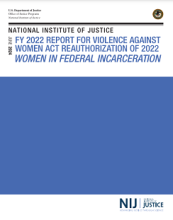Domestic violence
Responding to Intimate Partner Violence Related Strangulation Integrating Policy, Practice, and Rese
This webinar examines the problem of Intimate Partner Violence Strangulation and an innovative response policy. The presentation will include an overview of the nature and extent of strangulation, its dangers, and adverse medical consequences followed by a review of a Strangulation Ordinance in Burleson, Texas that mandates extensive training for first responders and a city-wide response protocol for strangulation detection and investigation, documentation of strangulation signs and symptoms, medical assistance, and service referrals for strangulation survivors.
See the YouTube Terms of Service and Google Privacy Policy
A Study of the Criminal Victimization of Policewomen by Other Police Officers
Outcomes Associated with Arrest for Domestic Violence: A Systematic Review and Meta-Analysis
Exploring Factors Associated with Intimate Partner Violence Survivors’ Use of Financial Safety Planning Strategies
What about us? Formative evaluation of forensic nursing program delivery of intimate partner violence medical forensic examinations
Intent vs Impact: A Qualitative Investigation of Domestic Violence and Extreme Risk Protective Order Gun Prohibitions in Two States
Identifying High-Priority Needs to Improve Data and Metrics in Policing
Understanding the Impact of COVID-19 on Victim Services
Understanding the Impact of COVID-19 on Victim Services
The COVID-19 pandemic had a detrimental impact on communities across the nation and significantly affected various aspects of individuals’ lives. One of the negative impacts was an increase in gender-based violence accompanied by shifting barriers to accessing services and support. Victims and victim service providers faced various challenges dealing with the increase in need for services, navigating barriers to help-seeking, and addressing logistical issues.
See the YouTube Terms of Service and Google Privacy Policy



